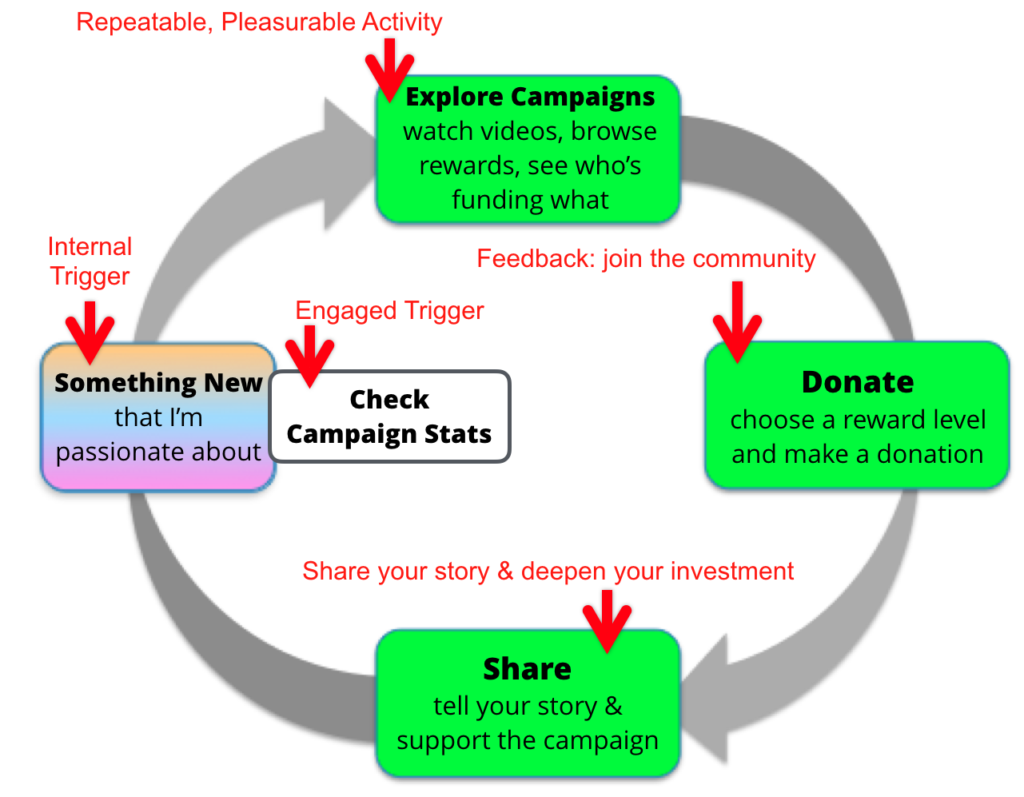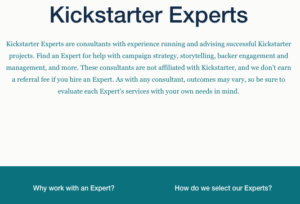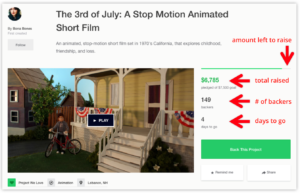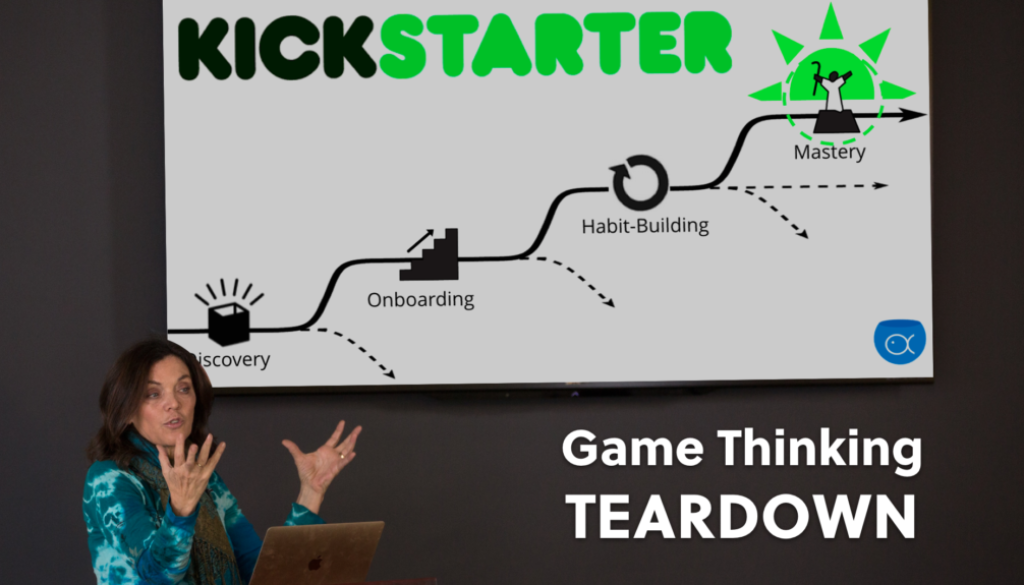Cooperative Design the Kickstarter way
What makes Kickstarter’s game-like core experience & path to mastery so compelling?
Kickstarter is an incredibly successful crowdfunding platform that continues to evolve and stay on the cutting edge. How do they do it? How does Kickstarter deliver an experience that pulls new customers into the platform – and entices them into learning what they need to know to succeed?
The answer, of course, is multi-faceted – there’s no “silver bullet” solution. Kickstarter is executing well on many fronts. But there are a set of attitudes and practices that set Kickstarter up for success early-on, and helped them stay nimble in a fast-evolving digital landscape.
Tip #1: A strong vision helps you say “no”
When Kickstarter began to gain traction and visibility, there were many opportunities to align with celebrities and add “exclusive benefits” to the platform. But Kickstarter was founded on a strong vision of creating a level playing field for artists and creators to “test the waters” and get their projects off the ground. So they said “no” to many lucrative sponsorship & ad placement opportunities – and instead, grew into the leading platform for creators of all kinds.
Tip #2: Engage your customers & make them smarter with a strong Learning Loop
A Learning Loop is a repeatable, pleasurable experience that helps your customer get better at something. Games are filled with Learning Loops – and so are compelling products.
 Check out Kickstarter’s Learning Loop, which is nothing short of brilliant.
Check out Kickstarter’s Learning Loop, which is nothing short of brilliant.
- You discover an intriguing campaign on social media – and follow the link
- You watch the video, check out the rewards, browse through the community, and decide to support something you care about and donate to the campaign
- Then – right when you’ve put skin in the game – you’re prompted to share your story and help the campaign get funded.
- So you write a social media post – and the cycle continues all over again.
- Then you follow the campaign… checking the stats, reading the updates – and do what you can to help it succeed.
Tip #3: Reward mastery with tools, powers & opportunities
Kickstarter is resolutely open to first-time campaigners – that goes back to their core mission and reason for existence. Kickstarter offers many resources to help campaigners succeed – but at the end of the day, it’s all about making a great video and mobilizing your community into action.
 For Kickstarter campaigners, the learning path is built around mastering the art of online campaigning. Although it’s a level playing field in terms of submission, successful campaigns are rewarded with visibility and support resources as they gather steam.
For Kickstarter campaigners, the learning path is built around mastering the art of online campaigning. Although it’s a level playing field in terms of submission, successful campaigns are rewarded with visibility and support resources as they gather steam.
The best way to reward mastery is with real impact – and connecting experts with beginners is a strong move. Kickstarter now has an emerging marketplace of experts who’ve mastered the system – and offer their help and support to new campaigners, with Kickstarter’s blessing.
Tip 4: Use cooperative stats to build group identity
 Like Slack, Kickstarter struggled internally with the temptation to juice competition with zero-sum mechanics like leaderboards and head-to-head competitions. And like Slack, Kickstarter largely resisted that urge, and built an environment where each campaign is competing with the system to get funded by the deadline.
Like Slack, Kickstarter struggled internally with the temptation to juice competition with zero-sum mechanics like leaderboards and head-to-head competitions. And like Slack, Kickstarter largely resisted that urge, and built an environment where each campaign is competing with the system to get funded by the deadline.
Check out the stats on a Kickstarter campaign page. You can see the total amount raised and size of the crowd – and if you want to dig deeper, click through the see who else funded it and what they’re saying. But you won’t see ordered lists of who the biggest funders are – instead, the stats are built to support group identity and commitment to a shared goal.
Tip 5: Use spotlights – NOT leaderboards – to highlight excellence
 Kickstarter made a smart move by resisting the urge to juice competition. Another sign of this is the spotlights they’ve used for many years to showcase excellence. On the Kickstarter home page, you can browse a “spotlight list” of categories and see great campaigns in each one. These spotlights change regularly, and give campaigners in every category a chance to be acknowledged.
Kickstarter made a smart move by resisting the urge to juice competition. Another sign of this is the spotlights they’ve used for many years to showcase excellence. On the Kickstarter home page, you can browse a “spotlight list” of categories and see great campaigns in each one. These spotlights change regularly, and give campaigners in every category a chance to be acknowledged.
Dig Deeper: the Kickstarter Game Thinking Teardown
Want more? Join us online next Wednesday when we’ll dig deeper and show you how the Kickstarter customer journey and learning loop work together to draw people back again and again. You’ll learn:
- how Kickstarter’s early constraints and focus on artists led to their breakout success
- why Kickstarter’s path to mastery is ideally designed for a two-sided marketplace
- how Kickstarter’s cooperative game mechanics create a sense of community
- why Kickstarter’s first community manager understands the power of being wrong and saying “no”
As a bonus, you’ll get our Game Thinking Teardown template—a step-by-step guide for creating your own Teardown of key competitors and in-process product ideas.
